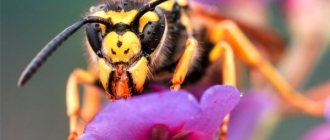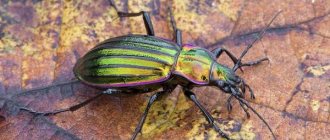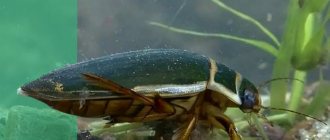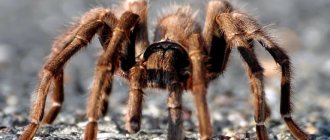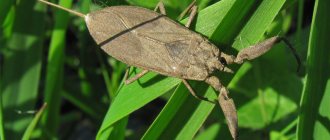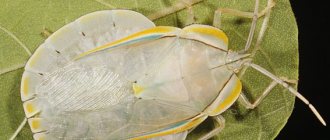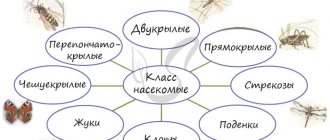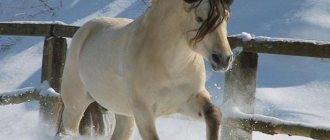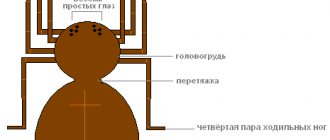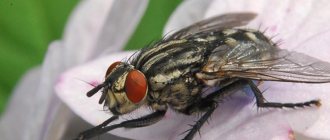Why do insects need legs? There seemed to be only one definite answer to this question: for movement, of course. In fact, the legs of insects perform several functions.
The function of an insect's limbs depends on the environment in which it lives, how it feeds and defends itself. Therefore, the paws of different species are adapted for digging passages, burying dead animals, making nests, protecting against attack, capturing food, jumping, swimming, and running.
Insects
Insects belong to the largest class of animals, uniting a large number of groups. Their body, like that of all animals, is segmented, with articulated appendages. It is covered with a less or more hard exoskeleton, which contains the polysaccharide chitin.
- relatively small sizes;
- two pairs of wings (some are missing);
- three pairs of legs.
To date, 900,000 species of insects have been described, but there are many more of them - several million, some of them in a single copy. A number of shapes represent beautiful creations, such as butterflies.
Most insect species are terrestrial, but there are also those that lead an amphibious lifestyle. They are found in lakes and rivers, deep caves and deserts. Some species regularly make long flights, others spend their entire lives inside some fruit or even a seed.
insect body
The insect's body consists of three parts: the head, thorax and back. On the head, 6 segments have merged together and are not noticeable at all.
The chest consists of 3 segments. The back part is usually made of 10, on the sides of which there are breathing holes.
Insect skeleton
Insects are invertebrate animals, therefore the structure of their body is fundamentally different from the body structure of vertebrates, which includes humans. Our body is supported by a skeleton consisting of the spine, ribs, and bones of the upper and lower limbs. Muscles are attached to this internal skeleton, with the help of which the body can move.
Insects have an external rather than an internal skeleton. Muscles are attached to it from the inside. A dense shell, the so-called cuticle, covers the entire body of the insect, including the head, legs, antennae and eyes. Movable joints connect numerous plates, segments and tubes found in the insect's body. The cuticle is similar in chemical composition to cellulose. Protein gives extra strength. Fats and wax are part of the surface of the body shell.
Therefore, the insect shell is durable, despite its lightness. It is waterproof and airtight. A soft film forms on the joints. However, such a durable body shell has a significant drawback: it does not grow with the body. Therefore, insects have to periodically shed their shells. During its life, an insect changes many shells. Some of them, such as silverfish, do this more than 20 times. The insect's shell is insensitive to touch, heat and cold. But it has holes through which, using special antennae and hairs, insects determine temperature, odors and other characteristics of the environment.
External structure of an insect
In this tutorial we will get acquainted with the main parts of the structure of insects, which are presented in illustrated form.
Insect antennae
Wings of insects Beetle - a racer from the ventral side Legs of insects
Breasts and appendages
ABDOMEN AND ITS APPENDICES
| Male scorpions have a thickening at the end of the abdomen with genital organs, which resembles the “tail” of a scorpion. When an earwig is disturbed, it folds its abdomen onto its back and spreads its claws, ready to grab an enemy with them. With them she holds food while eating, and in addition, she straightens and folds her hind wings |
The structure of insect integument
Internal structure of insects (female black cockroach)
Insect circulatory system
Digestive system of insects
Nervous system of insects (Feature of insects - giant nerve cells)
Respiratory system of insects
Insect reproductive system
Incomplete metamorphosis of insects (three stages - egg, larva, adult insect)
Complete metamorphosis of insects (four stages of development - egg, larva, pupa, adult insect)
Insect eyes
“Dragonfly” 1. Facet. 2. Compound eye. 3. Ommatidium. 4. Cornea. 5. Pigment cell. 6. Crystal crystal cone. 7. Sensory cell (visual receptor) 8. Rhabdom. 9. Nerve 10. Basal membrane.
At the lower border of the forehead and above the bases of the lower jaws are structures called tentorial fossae. These are invaginations of the integument that penetrate inside the head capsule and form its internal skeleton - tentorium.
The internal skeleton, the fusion of the head segments and their chitinous plates provide special strength to the head capsule.
Complex compound eyes consist of individual ocelli - ommatidia, the eye is covered with a transparent cornea, which has the appearance of a convex hexagon (facet). Under the cornea there is a so-called crystalline (crystalline) cone, together they form the lens of the eye.
Light is perceived by receptor (retinal) cells. Their sensitive parts - rhabdomeres - are located in the central part of the ocellus and form a photosensitive element - rhabdom. Pigment cells lie along the edges, isolating one eye from the other.
Pigment cells in diurnal and nocturnal insects differ in the ability of the pigment to move within the cell.
In nocturnal insects, pigment can accumulate in the upper part of the cell, while light rays fall on the receptor cells of the neighboring eye and this significantly increases the light sensitivity of the eye.
Compound eyes can include from several hundred to 28,000 (in a dragonfly) ocelli, each capable of perceiving a narrow beam of light rays. As a result, the image of the object is composed of individual “points” (it is mosaic in nature).
Such an image is blurry and poorly characterizes the shape of the object. But the advantage of the compound eye is a very wide field of vision, which allows you to catch any movement and notice prey or an enemy in time.
Many insects also have simple eyes, consisting of a lens, a layer of sensitive cells, and a cover of pigment cells. At the larval stage, simple eyes have a different structure and disappear during metamorphosis.
Antennae (antennae, collarbone) are appendages of the head lobe.
They represent a series of segments of various shapes: bristle-shaped (retina, butterflies, cockroaches), filamentous (wasps, bees, beetles), serrate (moths), comb-like (butterflies, beetles), pinnate (butterflies, dipterans), cranked (lamella beetles) ), club-shaped (butterflies, beetles).
Antennae perform tactile and olfactory functions; in various species of insects they are used to perceive temperature, air humidity, ultrasound, and the gravity of the Earth.
Nutrition and reproduction
Most often, ants build their nests (anthills) in the soil, as well as under stones or in wood. Insects mainly feed on plant sap or the honeydew of sucking insects. There are some species that feed on mushrooms and seeds. The basis of nutrition for all ants is made up of two components:
- proteins;
- carbohydrates.
Adults feed on carbohydrates, and larvae eat protein. These insects are considered universal predators. Ants hunt invertebrate insects or collect their corpses. Any food entering the nest is distributed among family members. Young individuals go through several stages of development:
- egg;
- larva;
- chrysalis;
- imago.
The life of any type of ant begins with an egg. After a while, a sedentary worm-like larva emerges from it, which is cared for by working individuals. When the pupation phase begins, the larva stops feeding. While the larva is still feeding, it can develop into a worker or a queen; everything here depends on its nutrition.
In the larval and pupal stages, insects stay in a separate place with a constant temperature. After the stage is completed, the worker ants help to emerge from the pupa, since the individual itself is not able to emerge from the cocoon.
Lifespan
After formation, the mayfly exists only for a few minutes.
The lifespan of insects depends on many factors of the internal and external environment - climatic conditions, the presence/absence of predators, suitable food, genetic characteristics and even gender. Some live no more than a few hours, while others successfully exist for decades. Mayflies, stoneflies, and caddisflies are examples of invertebrates with a minimal lifespan. Thus, the female mayfly Dolania americana, after completing the formation of her body, lives exactly 5 minutes. But she also uses this time with maximum benefit - laying eggs. Moreover, the same mayfly, which has not yet turned into an adult and is at the larval stage, can live 2-3 years.
Butterflies exist somewhat longer than mayflies - about 2-3 weeks. Dragonflies and beetles develop within 2 years, but the same stag beetle lives 4 years as a larva, and in the adult state no more than 1-2 months. Conversely, an adult thistle lives for 8 years, while its larva develops very quickly.
Interesting fact : the song periodical cicada, which lives in North America, lives 16-17 years as a larva, and the queen ant lives even longer - 20 years. The termite queen reaches the age of 25 years.
Main distinguishing feature
Very often, many people who do not know biology well confuse ants with mites or spiders. In fact, the answer is simple - mites have 8 legs, and ants have 6 legs. Our arthropod fauna includes only spiders, ticks and ants. There are some beetles that can imitate the body shape of an ant in order to enter their nest. It is quite difficult to distinguish them from ants.
Laboring insects use their legs for more than just running. Due to the peculiarity of placing them wider than its body, as well as their strength, the insect lifts the weight above itself and carries it. The mass of the load can be 50 times the total mass of the ant itself.
The feet are also used to measure distance. This is what ants living in deserts do. They serve as a navigational tool for them. The insect remembers how many steps it takes before turning and makes corrections, focusing on the angle.
Scientists have discovered an odor in the feet of ants that releases strong-smelling pheromones. These substances are used for marks during movement. Thanks to this, other individuals can follow the path, since it will become noticeable to them. A large number of marks will attract more brothers.
Sometimes mistakes happen in placing the marks, after which the rest of the ants begin to lose their way and run in a circle. They close their path with a fresher trail, which can later become a real disaster for the whole family.
Thanks to their thin but mobile legs, ants are able to work wonders, performing very difficult daily work.
The speed of an ant is in its paws
It has 3 pairs of legs, so there are 6 legs in total, this is the main difference between an insect and a spider. All pairs of paws have their own sizes and proportions and are located on a separate part of the chest. The front legs are on the front of the chest. These paws have special devices that resemble miniature brushes. With their help, the insect cleans its whiskers and other legs.
The hind legs are equipped with spurs that perform specific functions. Most often, spurs serve as weapons of defense or attack. Insects use them to fight other ants. Due to the unique structure of their legs, ants can perform many useful and vital actions with their help.
Very often insects are forced to move along a smooth and steep surface
. Due to the structure of their paws, this is not an obstacle for them. Very small ants can move on any surface, such as glass, which cannot be said about spiders or cockroaches.
The small serrations on their paws help them overcome many obstacles along the way. With their help, ants cling to protrusions on the surface. The bark of trees and stones are their natural habitat, so they move along them like stairs at high speed. Some species can move at speeds of up to 4 km/hour.
Also, thanks to their paws, some types of ants can swim. Australian bulldog ants can swim a distance of 15 meters
, for example, a puddle on the way. Insects of this species also jump well; the jump can reach 50 cm in length.
Number of legs in insects
So how many legs do insects have? One of the distinguishing characteristics of this class is the presence of three pairs of paws. They are all located in the thoracic region, with one pair on each of the three component segments.
Ancient insects also had legs on their abdomen, which is still reminiscent of the presence of rudimentary appendages in some modern species.
Under the influence of a certain lifestyle during the process of evolution, these creatures developed several types of paws. The most common of them are running and walking. Primitive insects have just such three pairs of legs. For some representatives of the superclass, changes in external conditions and subsequently in the manner of movement entailed modification of the limbs. The middle pair of legs did not undergo specialization during evolution. It is needed for walking.
Hexapods
Most insects, with all the variety of habits and sizes, have the same characteristics. So, in this case, to the question of how many legs insects have, the correct answer is “Six.” Three pairs of limbs are observed in ants and fleas, mantises and weevils, and in more than a billion species. True, the paws differ in structure, and in connection with this, oddly enough, in purpose. “How is it possible,” you will be surprised, “are the legs really intended not only for moving the body along the surface?” It turns out that this is true. Habitual concepts are undergoing significant changes; you just have to pay attention to the small (in size) inhabitants of the planet. They, as scientists say, mastered the earth long before mammals, have a serious organization that allows them to exist excellently and not pay attention to the “king of nature.”
How are limbs constructed?
The fact that insects belong to the class of arthropods is confirmed by the structural features of their legs. They consist of several segments. The main segment is the coxa, which is attached to the corresponding segment of the chest and has a certain shape. Different types of insects have different shapes. In some, this segment looks like a transverse cylinder or ball, in others, the coxa looks like a wide leaf or cone. The mobility of the limb directly depends on the shape of the coxa.
The smallest segment, motionlessly articulated with the thigh, is called the trochanter. In some bugs it is double.
The thigh is connected to the lower leg by the knee, the leg ends with a paw with small claws. The paw consists of several (2-5) flaxes that are connected to each other.
Scientists, studying the number of limbs in insects of various classes, unexpectedly came across the fact that some of their representatives have an interesting mechanism in their structure - a gear. It can be represented schematically in the form of two interlocking wheels with notches. These wheels, through protrusions, interact and synchronize movement. This mechanism allows insects to jump at tremendous speed.
Types of Insect Limbs
The most ancient are the running and walking legs of insects. The remaining types of limbs appeared in the process of long-term development, and, as a rule, are associated with various adaptations to environmental conditions.
- Running limbs
The running legs have an elongated shape. They are slender, and the tarsus, lower leg, thigh and coxa are narrow or wide. This type of limbs is present in cockroaches and ground beetles.
- walking legs
Walking legs are designed for slow movement. These are the legs of beetles - longhorned beetles, leaf beetles, crawling from leaf to leaf, leisurely gnawing leaves.
Insects need limbs to move around.
- Swimming limbs
The hind legs of insects usually become swimming, and less often the middle legs. They are covered with long hairs that form a wide rowing surface - a kind of oar. Basically, representatives with such limbs live in bodies of water and swim and dive excellently. These are swimming beetles, smooth bugs, and water lovers.
- Jumping legs
Representatives of the order Orthoptera have jumping legs. These include locusts, grasshoppers, and crickets. Their last pair of legs is very long and powerful. Many representatives of Orthoptera jump in heights of up to eighty centimeters, and if they spread their wings at the same time, the distance covered in one jump reaches about ten meters.
- Digging legs
Digging legs are characteristic of the mole cricket, dung beetle, and May beetle. Usually the first pair of legs become digging legs. The limbs of this type are powerful, flat and short.
The legs of grasshoppers give them the ability to move tens of meters in a matter of seconds.
- Collective limbs
The limbs of bees and bumblebees are called collective or basket limbs. On the hind legs of these insects there are special areas surrounded by long chitinous hairs; these are baskets. Bees move from flower to flower and get dirty in the pollen that sticks to the hairs of their bodies. With special brushes located on the legs, the bee collects flower pollen into baskets.
the adhesive dust particles form a lump called “polnoka”. The bee carries pollen into the hive and deposits it in the honeycomb. Bee bread soaked in nectar is formed; it serves as a reserve protein food for the entire bee family.
Thanks to the collecting type of legs, the bee can “save” pollen.
- Grasping legs
Grasping legs of a praying mantis. They are armed with sharp spines, which the predator uses to hold its prey.
- Suction limbs
The legs of males of some species of insects - swimming beetles and ground beetles - have expanded segments at the ends of the legs. During the breeding season, males use these devices to grasp females during mating.
Grasping legs help not only to hold prey, but also to the female during mating.
Why gears?
While studying the number of legs in insects of different classes, their structure and functions, scientists came across an unexpected fact. Some of them have an interesting mechanism in their structure - a gear. Schematically, it can be represented in the form of two jagged wheels that are interlocked. Through the protrusions they interact and synchronize movement. Why is this?
It turns out that this mechanism allows insects to jump at tremendous speed. This miracle lives in America, it is called Jesus. It is not capable of flight, but it makes amazing jumps. Even a speeding car will not be able to overtake it during takeoff. It is interesting that these legs are located not on the sides, but at the bottom of the insect.
This makes his life problematic. If you do not push off synchronously, then the jump will not work. The insect simply circles on one leg. Evolution has eliminated this effect with a mechanical device whose purpose is to make the shocks synchronous. The scientists' surprise knew no bounds. This is the first recorded fact of the use of engineering in the structure of living beings.
Many people are confused about the types of invertebrates when answering the question of how many pairs of legs insects have. Spiders and centipedes of all kinds are mistakenly included among them, which is fundamentally incorrect. Later we will say a few words about them, but for now we will turn our attention to representatives of the Insect class.
Water bugs
All aquatic insects are of interest from the point of view of the structure of their limbs. They demonstrate a completely different, but also unique adaptation. Science has asked how they can float on the surface of the water and not drown? It turned out that the water beetle has a kind of oar on its hind legs. Special hairs have grown on them, with which the insect makes rowing movements. This is how it floats on water. Some species are equipped with thickened and widened segments (this is the last section of the leg). Thanks to this structure, they can float perfectly on the water. Although these insects prefer to live in calm waters. It is difficult for them to fight against strong currents. The little creature does not have enough strength for this.
Male grasshoppers slide down a double row of small spines they have in their tibia onto their thighs to emit sounds with which they attract females. Once mating has occurred, the female lays her eggs underground thanks to her knife-shaped “strike” called an “ovipositor.” This occurs in late summer or autumn, and soon after the first cold arrives, the adults will die and the young will be born in the spring, in April. They are whitish and after a few minutes they are released from the egg, but run the risk of being consumed by ants.
If they manage to survive, they will go from larvae to adults in about six weeks. Grasshoppers molt just like snakes: after about six they are considered adults, and after a couple of weeks they will be ready to reproduce. There are about a thousand species of grasshoppers in the world, which we can find in our country. We have quoted some of them, and we get one of the most normal: the winged grasshopper that jumps across our meadows every summer.
Reproduction
Insects are bisexual animals, which implies the division of representatives of each species into males and females, which together go through the following stages:
- insemination;
- fertilization;
- laying eggs (larvae).
Different types of insects have unique methods of reproduction. Thus, primary wingless insects reproduce externally-internally, and winged ones mate.
In insects that are characterized by a bisexual method of reproduction, eggs often develop without fertilization (spontaneous parthenogenesis). These include the silkworm. This type of prolongation of the race is typical for animals living in an unfavorable climatic zone, where representatives of the opposite sex are rare. Moreover, the same types of insects can reproduce in different ways. For example, the European stick insect is capable of producing offspring bisexually, but in the northern regions it prefers parthenogenetic reproduction.
Characteristics of the functions of the main types of insect limbs
Any type of limbs allows insects to perform various vital functions and provide the opportunity to adapt to various environmental changes, the dynamics of which are sometimes very drastic.
The most ancient are the running and walking legs of insects. The remaining types of limbs appeared in the process of long-term development, and, as a rule, are associated with various adaptations to environmental conditions. Running and walking legs allow insects to perform basic types of movements and explore different habitats.
As for the running limbs, they have an elongated shape, all of their parts are thin and very elegant. This type of limbs is more typical for ground beetles and cockroaches.
Walking legs are designed for slow movement. Such legs are found in beetles, longhorned leaf beetles, which leisurely gnaw leaves. The movements of walking legs provide a kind of “crawling” of insects and this is very convenient for them if they need to find shelter.
The swimming limbs of insects are also interestingly designed. The hind legs, and less often the middle legs, of insects become swimming. They are covered with long hairs and form a ridge surface - a paddle. Insects that have limbs of this type swim excellently and also dive (for example: swimming beetles, water lovers).
Jumping legs are characteristic of the order Orthoptera. These include locusts and crickets. The last pair of legs of such insects is very powerful and can allow the insect to rise up to 8 centimeters in height. When spreading their wings, these insects can make a jump, the length of which is up to 10 meters.
Digging legs are characteristic of mole crickets, dung beetles and the May beetle. The front legs usually become digging legs. They can be powerful, flat, short. Depending on the density of the soil in which the insects are located, their digging limbs may vary slightly in shape.
Collective limbs are characteristic of bees and bumblebees. On the posterior sections of such limbs there are baskets or special areas with long chitinous hairs. At the same time, the bees move from flower to flower and get dirty in the pollen that sticks to the hairs of the body. With special brushes located on the legs, the bee collects flower pollen into baskets. Collecting legs allow insects to accumulate pollen. The work of the collective limbs is the most important example of the implementation of the relationship between different kingdoms of living organisms, which makes it possible to preserve the integrity and unity of the organic world. Without collecting limbs, the process of plant pollination would not be possible. It is very important for plants to attract pollinators, since without them the process of reproduction and transition to a new stage of development becomes impossible. And the insects, in turn, receive a nutrient medium for themselves.
Grasping legs are developed in praying mantises. They are equipped with very sharp spines, which the predator uses to hold its own prey. Therefore, the hunting of these insects turns out to be very effective. Grasping limbs are also characteristic of some representatives of locusts. Since the number of predatory insects is quite large, limbs of this type are quite common than limbs of other types.
Suctioning limbs are characteristic, for example, of diving beetles or ground beetles. At the ends of such legs there are expanded segments. During reproduction, these devices are necessary for males to grasp females.
On the front legs of many insects, especially representatives of the order Hymenoptera and butterflies, there is an apparatus for cleaning antennae, spiracles and other parts of the body. It is a notch at the end of the tibia, equipped with a comb of hard bristles and spines on the first segment of the tarsus. With this device, insects tidy up their appearance.
Thus, the limbs of insects have the widest adaptation. Largely due to such a high diversity of their own structure, the limbs allowed insects to spread widely in all habitats and achieve a high degree of species diversity.
Cicada
The world of insects also has its own record holders. Thus, the structure of the limbs of the penny cicada allows it to jump to incredible heights, given its small size. If we draw an analogy with a person, we get two hundred and ten meters. It is clear that this insect has a pair of jumping limbs, very strong and fast. They act like a catapult, powerfully sending the body upward. In this case, the acceleration reaches four thousand meters per second. And in order not to slide off the plants on which the insect feeds, its front legs are equipped with sharp spines.
What about centipedes and spiders?
Contrary to popular belief, and even to the name, the centipede has not forty legs, but only thirty. By the way, they appear in an extremely interesting way in an invertebrate. At the beginning of its existence, it has only eight legs (almost a spider). Then the centipede begins to grow, the body lengthens, and additional limbs gradually grow. It turns out that the question of the number of legs of a centipede is closely related to its life expectancy.
And this creature treats its limbs very carelessly. As soon as it senses a threat, for example, a paw is stuck to the web, without thinking twice, they simply get rid of it. We can say that this is a kind of defense mechanism. Very convenient, isn't it? Especially considering that the centipede is capable of regenerating limbs.
Spider... Strange as it may sound, this representative of the animal world is not an insect. It has eight legs, not six, like insects, and the body consists of only two parts (the cephalothorax and the abdomen). In most cases, all spiders are predators, while insects mostly feed on vegetation.
Bee
Everyone knows this hard work. It flies, pollinates flowers, collects honey... How many pairs of legs does an insect have, and are all of its limbs like this? It turns out that the bee has special baskets on its forelimbs into which it places pollen. On the very last segment, the tarsus, there are fibers called brushes. With them the bee collects a valuable product. If you look closely, it turns out that the front pair are almost arms with a very complex structure. But scientists do not recognize this fact. These limbs belong to the legs and are called collective limbs. Let's count the number of walking legs in bee insects. If two legs are devoted to collecting operations, then the insect moves with the rest. This means that she has two pairs of walking legs. This is basically how the calculation is done, but not for everyone.
Types of legs in larvae
The legs of larvae (caterpillars) are very different from the legs of adults. They lack division into segments and other anatomical features. The larvae have short, usually soft, numerous legs that end in a wide or narrow sucker. There are thoracic and abdominal legs, as, for example, in the hawk moth caterpillar.
How many legs do centipedes have?
Centipedes are a special group (class) of invertebrate animals, differing from insects and spiders in their highly elongated body, almost all of whose segments are equipped with limbs (legs). Despite their external similarity, centipedes are very different from each other in body structure, and therefore scientists divide them into several groups (subclasses). The main ones are bipeds and labiopods. In bipedal centipedes, each body segment bears two pairs of legs. These millipedes closely resemble worms in appearance, live, as a rule, in the soil and feed mainly on plant debris (rotting leaves, rotten wood, etc.). Although bipedal centipedes are commonly called centipedes, they may actually have many more legs. The most “multi-legged” centipedes have approximately 750 limbs (375 pairs), and most species have only about 200 legs (100 pairs). Despite the huge number of legs, these animals move rather slowly, and therefore often become prey to various predators.
The giant African nodule reaches a length of 30 cm
The LEGS of a crawling centipede are driven by wave-like muscle contractions that extend from the front end of the body to the back. As a result, most of the animal's legs are in contact with the ground, but in three or four places along the length of the body they are raised up. At this time, the centipede moves them forward.
Communication
Cicadas are known for their singing.
Insects communicate with each other using sounds, light and contact signals and pheromones:
- Sounds. Many insects are able to produce and detect sound signals. This allows them to navigate in space, find representatives of their species for mating, and even scare off enemies. Sounds are produced by systematic impacts of different parts of the body on the substrate. But, for example, cicadas have timbal membranes that help them produce high-pitched calls that resemble screams. Grasshoppers, crickets and mole crickets rub their wing covers against each other. The result is a chirping sound.
- Contact signal. Characteristic of well-organized social insects, such as bees. Having discovered a source of food, the scout bee begins to perform something like a dance, luring its companions in this simple way. Ants use antennas on their heads to transmit signals.
- Glow. Most Coleopteran insects glow in the dark. They use light signals to search for food or call a partner. At the same time, the light does not have to be white or yellow; some fireflies alternately emit light of red and green shades.
Pheromones are used for the sole purpose of attracting individuals of the opposite sex. But some insects can emit certain odors when a predator approaches, scaring them away and driving them away.
Interesting: Interesting features of the structure and nutrition of animals - photos and videos
Everything about OSes - interesting facts
Individual specialists study the life of wasps and continue to amaze ordinary people with interesting facts.
- Little wasps. They are representatives of social, ordinary species. The body length of the female reaches 20 mm. Drones, workers, males - about 18 mm.
- Tree wasp. Includes many varieties, has a bright black and orange color. The size range ranges from 10 to 60 mm. The most dangerous representative of this genus is the hornet, which can be distinguished by its large dimensions. An interesting representative is the synodica wasp, about which there is extremely little information.
- Asian hornet. The most dangerous wasp. In China and Japan, 50 people die from bites every year, according to official statistics. For an allergy sufferer, one bite from a giant killer pest can be fatal. The size of the hornet reaches 5.6 cm.
- Great spotted scolius. This species is the most beautiful representative of large wasps. The female’s body size is 55 mm, the male’s is 32 mm. Lays larvae on the body of larvae of cockchafers and rhinoceros. Leads a primitive, solitary lifestyle. Despite its impressive size, it is safe for humans. The consequences of the bite are numbness.
- German women. Externally, wingless, furry females resemble an ant. Body size does not exceed 30 mm. The female has a bright color, the males of this species are brown in color. They do not build their own nests; they parasitize in the hives of bees and other wasps.
There are extremely many representatives of this species of Hymenoptera in the world, each of them is unique and has its own characteristics.
Wasp enemies
Despite the serious poisonous weapon in the form of a sting, wasps are often attacked by other insects and become victims of birds and mammals.
- Ants left without a queen destroy nests. Weak, sick individuals can become victims of these insects.
- The fan is paradoxical. The beetle makes its way into the hive, into the burrow of ground wasps, and lays eggs. Larvae develop on the body of young wasps.
- Hornets. The most formidable enemy of the wasp family is the killer wasps themselves, which have a significant advantage in size and number. Hornets completely devastate a family in one attack.
- Buzzard birds hunt wasps. The chicks are fed with adults and larvae.
In late autumn, the activity of the wasp family decreases; they become slow and inactive. They become victims of insects and many birds. In early spring, bears search for insects under stumps and bark.
Wasps
- a name that does not have a strictly scientific definition for some insects from the suborder stalked-bellied ( Apocrita
) order Hymenoptera. In principle, these are all stinging stalked bellies that are not related to bees and ants.
Types of wasps
The main classification divides these insects into 2 large groups.
Social wasps
They can be called differently, including paper. They form numerous families with up to 1 million individuals. They build nests of different sizes. A standard hive is the size of an apple, the largest being 60 cm in diameter. An image of the photograph can be seen below.
There is a clear division into castes. Individuals communicate with each other using sounds and signals. At the head of the family is the female queen, who is engaged in the reproduction of offspring. Some species of wasps provide several fertile females in one hive, but they do not pretend to be the queen, they simply help increase the number of members of the wasp society. Close-up of the wasp next.
Singles
They are distinguished by primitive behavior, each individual lives separately. There are no nests as such, there is no swarm. Most of them are predators. Eggs are laid on the abdomen of the larvae of large beetles, spiders, etc. The larva develops independently, eating the victim from the inside. At the end of the stage, it pupates and remains in this form for the winter. In spring, adults appear. The venom of some solitary wasps is extremely poisonous; the bite has been compared to piercing the skin with a hot nail. Photos with names can be seen below.
Social wasps are often called paper wasps, wood wasps, because their nests look like a cocoon woven from toilet paper, and nests are built on a tree, under the roof of wooden buildings, attics, hollows, and old stumps. Solitary wasps include sand, burrowing, and road wasps. Among them there are quite harmless, useful creatures, parasites, killers.
Wasps are ubiquitous in Russia. Among them there are polystina, vespin, scoli, road, typhy, sand.

